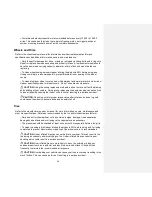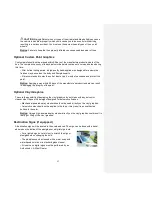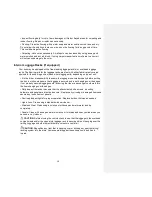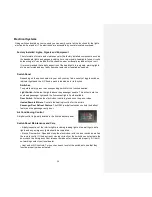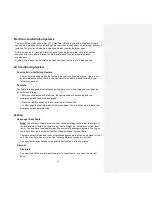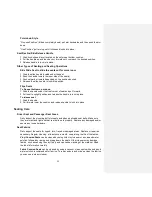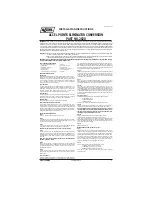
7
Vehicle Safety Standard Certification Labels
Vehicle Weight and Loading Restrictions Label
Provides the following information:
•
Name of the body manufacturer (MFG BY)
•
The month and year the body was manufactured (DATE OF MFG.)
•
Weight and Loading Restrictions: (GVWR, GAWR-FRONT, GAWR-REAR)
•
Certification Statement (MO and YR)
•
Vehicle Identification Number
•
Vehicle Type
The weight and loading restrictions are specified by the chassis manufacturer.
These loads are defined by the Gross Axle Weight Rating (GAWR). The GAWR is the
value of the load carrying capacity of a single axle system. It is measured by the
tire/ground interface, plus the Gross Vehicle Weight Rating (GVWR), which is the
maximum permissible load/weight of the bus.
Weighing the Unit
The weight of the empty vehicle will vary based on the equipment and options which are
installed on your particular bus. Properly loaded vehicles will perform better, handle
more safely and give you peak performance from your tires.
It is your responsibility to weigh the vehicle while empty and again when fully loaded
including fuels and other fluids, to ensure it stays within weight limitations. Weigh the unit
from time to time to make sure the bus stays within its gross vehicle weight limitations.
CAUTION
: Do not exceed the GVWR. Overloading can cause a potential safety
hazard. The driving ability and the handling of the unit could be greatly altered or
affected if your unit is overloaded.
CAUTION
: Overloading can cause your tires to overheat resulting in too much
friction and you could have an air-out which could result in a serious accident. Be sure
that the overall weight, including passengers, equipment and supplies etc., does not
cause your bus to exceed axle loads as well as the overall vehicle loads specified for
your particular bus.
Notice:
Overloading can cause parts to break and/or shorten the life of your vehicle.
Your warranty does not cover parts or components that have failed due to overloading.





















